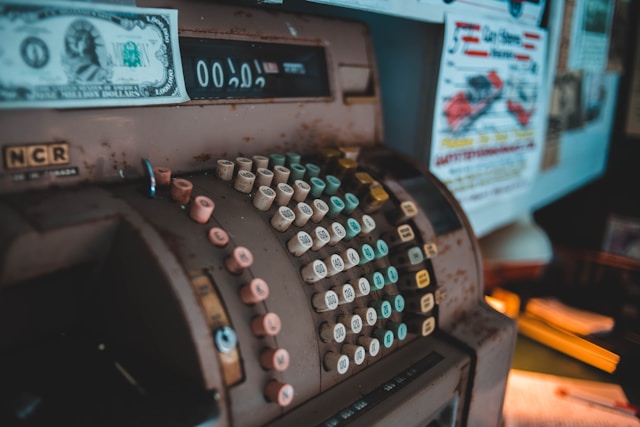XRP Price Chart Analysis : A Comprehensive Guide

Cryptocurrency markets have gained tremendous popularity over the past decade, and XRP (Ripple) is one of the digital assets that has garnered significant attention. You’ve probably read it already: XRP Price Analysis Today: Best Exploring Trends, Factors, and Predictions. Investors and traders alike are constantly seeking insights into XRP price chart analysis. In this article, we will perform a detailed analysis of the XRP price chart to help you understand its trends, potential, and the factors influencing its value.
See also : Unlocking XRP Long Term Growth Potential: A Comprehensive Analysis

I. Introduction
A. Brief Explanation of XRP Cryptocurrency
XRP, often referred to as Ripple, is a digital cryptocurrency that was created in 2012 by Ripple Labs. Unlike some other cryptocurrencies, XRP serves a specific purpose within the Ripple ecosystem: facilitating fast and low-cost cross-border transactions. This unique use case has made XRP a noteworthy player in the cryptocurrency world.
B. Importance of XRP Price Chart Analysis
Understanding the price movements of XRP is crucial for anyone who holds or intends to invest in this digital asset. A comprehensive analysis of the XRP price chart can provide valuable insights into potential buying or selling opportunities, as well as help assess the overall health of the XRP market.
C. Purpose of the Analysis
The primary goal of this analysis is to provide a detailed examination of XRP price chart analysis, technical indicators, sentiment analysis, and any relevant fundamental factors that could impact its price. By the end of this article, you should have a clearer picture of XRP’s past performance and potential future price scenarios.
II. Historical Price Data
A. Gathering Historical XRP Price Data
To begin our analysis, we need reliable historical price data for XRP. There are various sources available, including cryptocurrency exchanges, financial news websites, and market data providers. It’s essential to ensure the data is accurate and up-to-date.
B. Data Sources and Accuracy
When analyzing XRP price data, it’s crucial to verify the accuracy of the sources. Reputable cryptocurrency exchanges such as Binance, Coinbase, and Kraken often provide reliable historical price data. Additionally, data from trusted market analysis platforms like CoinMarketCap and CoinGecko can be used to cross-reference and validate price information.
C. Timeframe for Analysis
The timeframe you choose for your analysis can significantly impact your findings. Common timeframes for chart analysis include daily, weekly, and monthly data. Different timeframes provide different perspectives on XRP price chart analysis, so it’s important to select the one that aligns with your analysis goals.
III. Technical Analysis
A. Key Technical Indicators
1. Moving Averages
Moving averages are fundamental technical indicators used to smooth out price data and identify trends. Two common types of moving averages are the Simple Moving Average (SMA) and the Exponential Moving Average (EMA). The SMA gives equal weight to all data points, while the EMA assigns more weight to recent prices, making it more responsive to recent changes.
To analyze XRP’s moving averages, we’ll consider the 50-day SMA, 200-day SMA, and the 12-day and 26-day EMAs. These moving averages can help us identify trend directions and potential support or resistance levels.
2. Relative Strength Index (RSI)
The Relative Strength Index (RSI) is a momentum oscillator that measures the speed and change of price movements. RSI values range from 0 to 100, with readings above 70 indicating overbought conditions and readings below 30 indicating oversold conditions. In XRP price chart analysis, we’ll watch for RSI levels to help identify potential reversals or continuations in price trends.
3. MACD (Moving Average Convergence Divergence)
The Moving Average Convergence Divergence (MACD) is another widely used momentum indicator. It consists of two lines: the MACD line and the signal line. When the MACD line crosses above the signal line, it generates a bullish signal, and when it crosses below, it generates a bearish signal. Analyzing XRP’s MACD can help us gauge the strength of its price trends.
B. Trend Analysis
1. Identifying Major Trends
Analyzing the overall trend in XRP’s price movements is essential for making informed investment decisions. Trends can be categorized as bullish (upward), bearish (downward), or sideways (range-bound).
To identify major trends, we’ll examine XRP price chart analysisover the chosen timeframe and look for patterns of higher highs and higher lows (bullish), lower highs and lower lows (bearish), or a lack of significant price movement (sideways).
2. Support and Resistance Levels
Support and resistance levels are key price points where XRP tends to find buying or selling pressure. Support levels act as floors, preventing prices from falling further, while resistance levels act as ceilings, capping price increases.
Analyzing XRP price chart analysis historical data will help us identify these critical support and resistance levels. This knowledge can aid traders in setting stop-loss orders and take-profit targets.
C. Volume Analysis
1. Trading Volume Patterns
Trading volume is a crucial factor in technical analysis. It indicates the level of interest and participation in XRP price chart analysis. Higher trading volume often confirms the validity of price movements, while low volume can suggest uncertainty or lack of interest.
We’ll examine XRP’s trading volume patterns over the selected timeframe to identify any correlations with price movements.
2. Volume Indicators (e.g., On-Balance Volume)
Volume indicators like the On-Balance Volume (OBV) can provide additional insights into the relationship between trading volume and price. OBV accumulates volume on up days and subtracts it on down days, creating a cumulative indicator. Analyzing XRP’s OBV can help us assess the strength of price trends.
D. Chart Patterns
1. Common Chart Patterns
Chart patterns are recognizable formations on XRP price chart analysis that often precede significant price movements. Traders use these patterns to anticipate potential future price changes. Some common chart patterns include:
- Head and Shoulders: A reversal pattern indicating a potential trend change.
- Double Top/Double Bottom: Patterns suggesting a price reversal.
- Flags and Pennants: Continuation patterns during a trend.
2. Their Significance in XRP Price Movements
We’ll explore these chart patterns in XRP price chart analysis historical data and discuss their significance in predicting price movements. Recognizing these patterns can assist traders in making informed decisions.
IV. Sentiment Analysis
A. Monitoring Market Sentiment
In addition to technical analysis, market sentiment plays a significant role in cryptocurrency price movements. Traders often make decisions based on the collective sentiment of the market, which can be influenced by news, social media, and other factors.
B. Social Media and News Sentiment
Social media platforms like Twitter and Reddit, as well as news articles and forums, can provide insights into the sentiment surrounding XRP. We’ll discuss how to monitor these sources and interpret sentiment data to gauge market sentiment.
C. How Sentiment Can Influence XRP Price Chart Analysis
Understanding the relationship between market sentiment and XRP price chart analysis is essential. Positive sentiment can drive buying activity and price increases, while negative sentiment can lead to selling pressure and price declines. We’ll explore real-world examples of sentiment-driven price movements and how traders can use sentiment analysis as part of their decision-making process.
V. Fundamental Analysis (if Applicable)
A. Relevant News and Events
Cryptocurrency markets are highly influenced by news and events. We’ll discuss how significant news, such as regulatory developments, partnerships, technological advancements, and adoption by financial institutions, can impact XRP price chart analysis. Staying informed about these events is crucial for making informed investment decisions.
B. Regulatory Developments
Regulatory changes can have a profound impact on the cryptocurrency market. XRP has faced legal challenges in the past, with the U.S. Securities and Exchange Commission (SEC) filing a lawsuit against Ripple Labs. We’ll explore the implications of regulatory actions on XRP price chart analysis and the ongoing legal proceedings.
C. Partnerships and Adoption
Partnerships and adoption by financial institutions can boost the credibility and utility of XRP. We’ll discuss notable partnerships, such as Ripple’s collaborations with banks and payment providers, and how these partnerships can affect XRP price chart analysis.
VI. Conclusion XRP Price Chart Analysis
A. Summary of Key Findings from the Analysis
In this comprehensive analysis, we’ve delved into various aspects of XRP’s price chart, including historical data, technical indicators, sentiment analysis, and fundamental factors. We’ve identified key findings that can help traders and investors make more informed decisions.
B. Potential Future Price Scenarios
While we cannot predict the future with certainty, our analysis has provided insights into potential future price scenarios for XRP. We’ve considered both bullish and bearish perspectives, allowing you to better assess your risk tolerance and investment strategy.
C. Risk Factors and Uncertainties to Consider
It’s essential to acknowledge that investing in cryptocurrencies carries inherent risks. We’ve discussed some of the risk factors and uncertainties associated with XRP, including regulatory challenges, market volatility, and external events. Being aware of these risks is crucial for responsible investing.
VII. References
To support our analysis, we’ve referenced various data sources, charts, and references. Here are some of the key sources used in this article:
- Cryptocurrency exchanges (e.g., Binance, Coinbase)
- Market analysis platforms (e.g., CoinMarketCap, CoinGecko)
- Technical analysis indicators (e.g., Moving Averages, RSI, MACD)
- Sentiment analysis tools
- News articles and social media sources
Conclusion XRP Price Chart Analysis
Analyzing the XRP price chart is a multifaceted process that combines technical analysis, sentiment analysis, and consideration of fundamental factors. By thoroughly examining historical data and trends, monitoring market sentiment, and staying informed about news and events, investors and traders can make more informed decisions regarding XRP.
Remember that cryptocurrency investments are speculative and involve risks, and it’s crucial to conduct your research and consult with financial professionals if needed before making any investment decisions. Stay informed, stay cautious, and use the insights gained from this analysis as a foundation for your cryptocurrency investment strategy.
And for those of you who want to grow your Instagram account, you can directly use our service free instagram followers and you can like your post on instagram with Free instagram likes







